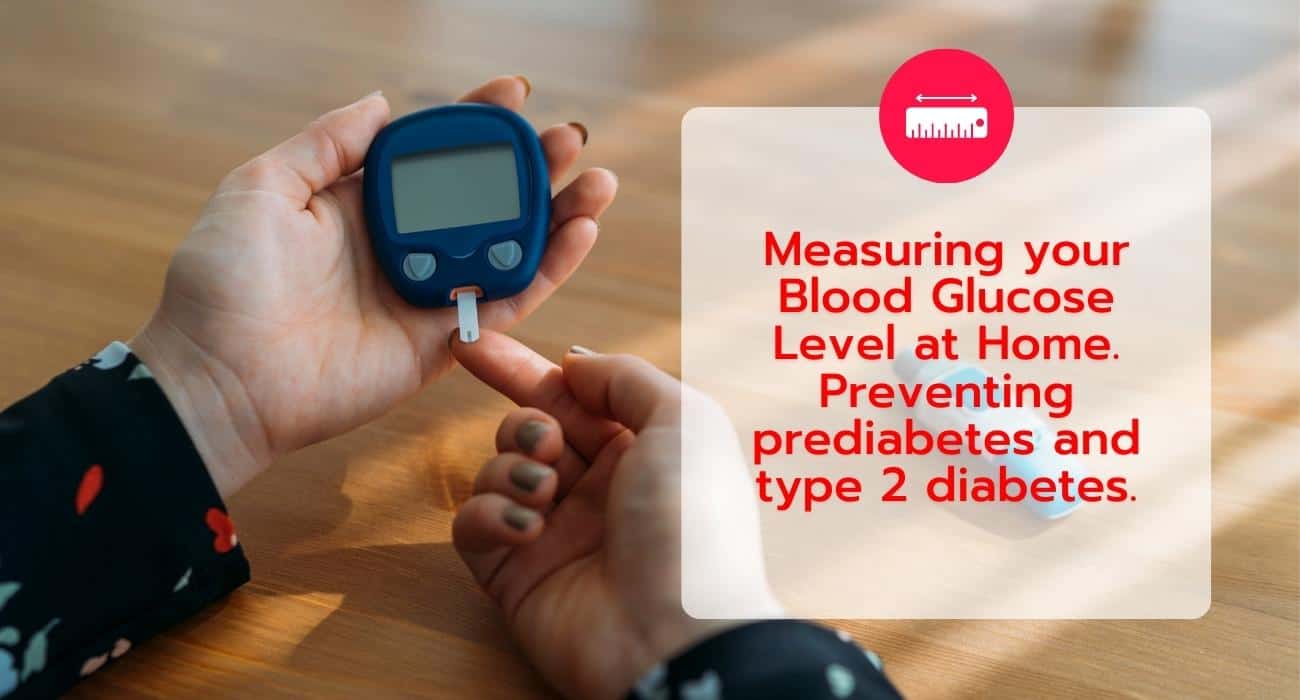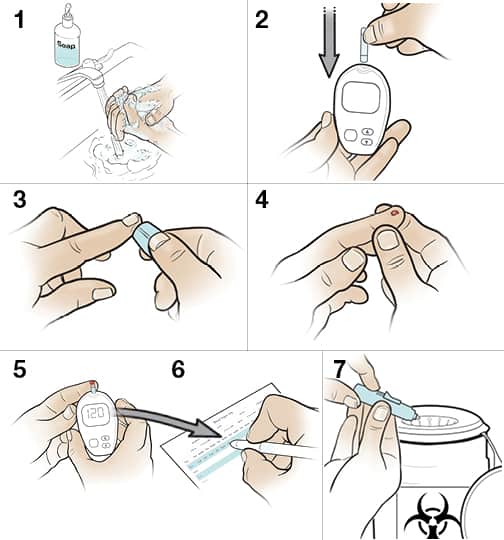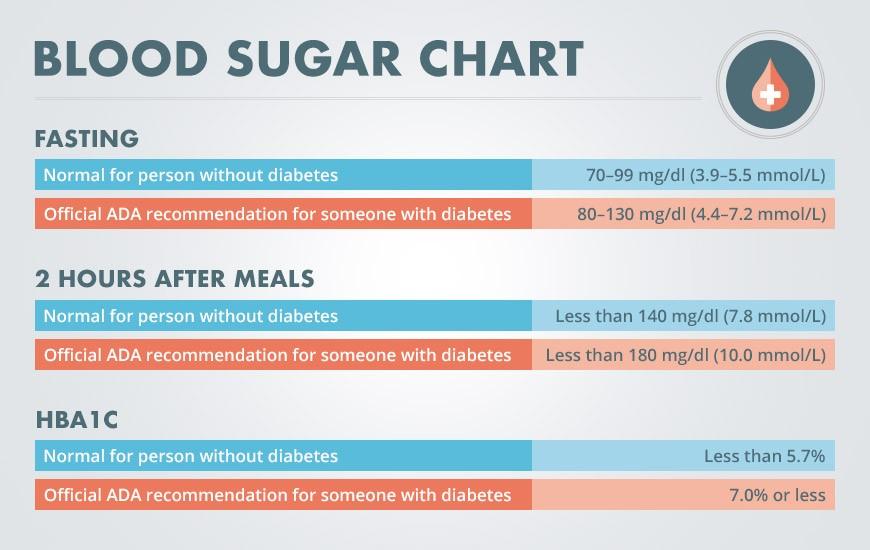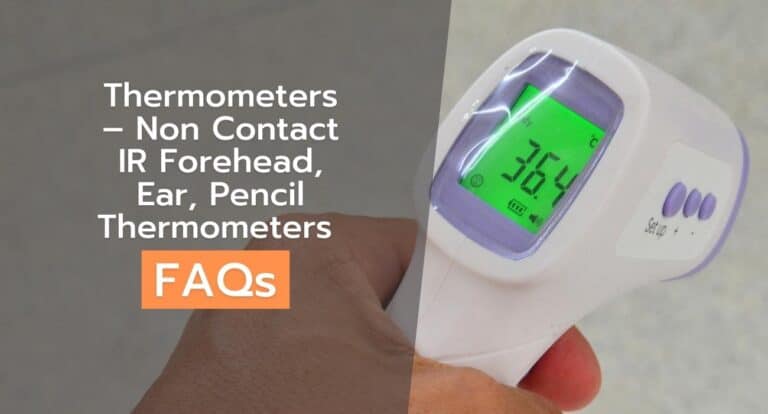Measuring your Blood Glucose Level at Home. Preventing prediabetes and type 2 diabetes.

Nowadays people have ways to check their health even in their own homes. However, only a few understood the need of monitoring your blood glucose level or blood sugar. With or without diabetes, blood glucose has an impact on your overall wellness. Since sugar is energy that the body processes every day, too low or too much blood sugar is harmful to your health.
What is Diabetes? What are the effects of diabetes?
Diabetes is when your body is unable to process the sugar in the blood (from eating sweet sugary food or simple carbohydrate such as bread, rice, pasta, etc). Diabetes will lead to serious problems such as kidney disease, heart problems, vision loss, limb loss, etc.
- Your body produces insulin to handle blood sugar (glucose).
- If you overeat sweet stuff or simple carbohydrate, your body overwork and eventually produce insufficient insulin
- Your body starts to have too much glucose in your body. That is diabetes.
- Diabetes leads to serious kidney, heart, eye, limbs, and other health issues.
Food that you consumed is broken down into simple sugar called glucose and released into your bloodstream. Your pancreas releases insulin to handle it. If your pancreas breakdown due to overworking from overeating, hereditary, etc, this is known as diabetes. When you have diabetes, you do not make enough insulin and your body starts to have too much sugar in your blood. There is currently no medical cure for diabetes. There is medication to manage it. A proper diet, exercising, no smoking, and a healthier environment can also help mitigate diabetes.
What is the blood sugar level for prediabetes and diabetes?
Your blood sugar level is the most accurate indication to detect whether you have diabetes from your blood sugar level:
- A fasting blood sugar level less than 100 mg/dL (5.6 mmol/L) is normal.
- A fasting blood sugar level from 100 to 125 mg/dL (5.6 to 6.9 mmol/L) is considered prediabetes.
- If it’s 126 mg/dL (7 mmol/L) or higher on two separate tests, you have diabetes.
Prediabetes refer to the blood sugar level before you are classified as diabetes. Good news is prediabetes sufferer can change their diet and exercise more to reduce the risks of becoming diabetes patients.
What are the 4 types of diabetes?
- Type 1
- Type 2
- Gestational Diabetes
- Prediabetes
There are three main types of diabetes. These are Type 1, Type 2, and Gestational Diabetes. Diabetes happens when your body doesn’t produce enough or any insulin doesn’t properly use the insulin it produced or it can be both.
Type 1 Diabetes
Type 1 diabetes is caused by an autoimmune reaction that stops insulin production. This type of diabetes is also called juvenile diabetes as it is usually diagnosed in children, teens, and young adults. Symptoms for type 1 diabetes develop fast and patients have to take insulin daily to manage this diabetes. Unfortunately, doctors do not know how to prevent Type 1 Diabetes. Only 5-10% of diabetes sufferers are Type 1 diabetes. The main reason you can develop this type of diabetes is hereditary.
Type 2 Diabetes
This type of diabetes is also known as insulin resistance. The body is unable to use insulin well and gets overwhelmed with too much blood sugar. Symptoms for Type 2 diabetes develop late and over years and are diagnosed usually in adults. Since symptoms develop late, people at risk should go for regular testing and take preventive measures. 90% of people with diabetes are suffering from Type 2 diabetes, and the good news is Type 2 diabetes is highly preventable. You can reduce onsets of Type 2 Diabetes with active exercising, a healthier diet, and less sugar and simple carbohydrates.
- Hereditary
- Bad diet (too much sugar, fats or simple carbohydrates)
- Lack of exercise
- Overweight
Gestational diabetes (pregnancy diabetes)
This diabetes happens occasionally in pregnant women. This develops through insulin-blocking hormones that develop during pregnancy. Gestational diabetes tends to disappear after the baby is born, but the woman remains at higher risk for Type 2 diabetes in her life. Similarly, the baby will have a higher genetic risk for Type 2 diabetes. A healthier diet and exercising can help to reduce the risks for type 2 diabetes later. The general symptoms of gestational diabetes are:
- Excessive thirst and hunger
- Slow-healing wounds
- Blurry vision
- Dry and itchy skin
- Frequent urination
- Fatigue
Prediabetes
Prediabetes is your body’s blood sugar condition just before it is considered diabetes the onsets of serious problems. The blood sugar level is still not too high, and your pancreas is still barely churning out sufficient insulin. With a change in diet, more regular exercise, and cessation of smoking (if any), prediabetes conditions can be managed to revert to a normal body and prevent the onset of diabetes.
Symptoms of Diabetes
Some of the signs and symptoms of type 1 and type 2 diabetes are:
- Frequent urination
- Extreme hunger
- Unexplained weight loss
- Increased thirst
- Fatigue
- Irritability
- Blurred vision
- Slow-healing sores
- frequent infections, such as gums or skin infections and vaginal infections
- Presence of ketones in the urine (ketones are a byproduct of the breakdown of muscle and fat that happens when there’s not enough available insulin)
10 ways to keep your blood glucose level low and healthy (Stop diabetes and prediabetes) :
So how can I prevent diabetes naturally, without medication? Type 2 diabetes is commonly known as a lifestyle disease as it can be prevented naturally with exercising and a good diet. Here are the top ways to have a healthier lifestyle to prevent diabetes. This is especially important if you are already eating lots of sweet stuff and/or having prediabetes.
- Exercise regularly
- Healthy diet- Eat less sugar and carbohydrate
- Drink more plain water (cut sugar in your drinks)
- Reduce stress in work, family, and lifestyle
- Try Apple Cider Vinegar
- Eat food rich in chromium and magnesium.
- Sleep well and sleep more
- Quit smoking if you are smoking
- Lose Weight if you are obese
- Monitor your blood sugar level
Exercise regularly
Exercise regularly can help you increase insulin sensitivity and lose some weight. Increased insulin sensitivity means that your cells are able to function to maintain your blood sugar level. Regular exercises also help your muscles pick up sugars from the blood to help reduce your blood sugar level.
Healthier Diet- Less sugar, fewer carbs, more fiber, more vegetables
Cut all or most sugar from your diet. The easiest way is to reduce soft drinks and other sweetened drinks. Leave sugar out of your coffee or tea. Only eat tiny portions of sweet desserts or sweet treats. Reduce eating simple carbohydrates. The carbohydrates that you consume are broken down into sugars by your body and then insulin moves the sugars into cells. When you consume too many carbs, this process fails which results in a rise in your blood glucose levels. You can try having wholemeal such as wholemeal bread, brown rice, brown pasta, etc instead of white grain food. Eating less such carbs and eating more vegetables instead. Vegetables increase your fiber intake as it is proven that fiber slows carb digestion and sugar absorption. Having lots of vegetables improve your heart and gut health too.
Drink water and stay hydrated
Staying hydrated can reduce blood sugar levels and prevent diabetes. In addition to preventing dehydration, it helps your kidneys flush out the excess blood sugar through urine. It is proven by a study that those who drank more water had a lower risk of developing high blood sugar levels. Go for plain water. Avoid sugary drinks, you can have iced chilled drinks to refresh instead. Add some fruits, cucumbers, tomatoes, etc to your drinks to give yourself a treat!
Control stress level
Hormones such as glucagon and cortisol are secreted during stress, causing blood sugar levels to rise. One study showed that exercise, relaxation, and meditation significantly reduced stress and lowered blood sugar levels for students. Exercises and relaxation methods like yoga and mindfulness-based stress reduction can also correct insulin secretion problems in chronic diabetes.
Try Apple Cider Vinegar
As mentioned in countless articles, Apple cider vinegar has many benefits for your health. Studies show that apple cider vinegar significantly influences your body’s response to sugars and improves insulin sensitivity. You can consume apple cider vinegar by adding it to salad dressings or mixing 2 teaspoons in 8 ounces of water. However, it’s important to check with your doctor before taking apple cider vinegar if you are already taking medications that lower blood sugar.
Eat Foods Rich in Chromium and Magnesium
High blood sugar levels and diabetes have also been linked to micronutrient deficiencies. Examples include deficiencies in the minerals chromium and magnesium. Chromium is involved in carb and fat metabolism. It also helps control blood sugar levels, and a lack of chromium may predispose you to carb intolerance. Magnesium-rich foods include dark leafy greens, whole grains, fish, dark chocolate, bananas, avocados, and beans.
Get Enough Quality Sleep
Poor sleeping habits affect blood sugar levels and insulin sensitivity. Sleep deprivation decreases the release of growth hormones and increases cortisol levels. It is necessary to get enough quality sleep to maintain good health.
Quit Smoking
Statistically, 44% of moderate smokers develop diabetes, and the risk goes up to 61%. That is horrible for smokers. Do seek medical advice in quitting smoking. It may be one of the most difficult things to do (we know how hard it can be!) but it is one of the best things you can do for your body. It will be tough for 2 months, but once you are over the craving, your body and mind will thank you for this!
Lose weight if you are obese
When you are obese, your body tends to do its work double time. Excess fats create inflammation and insulin resistance which significantly increases the risk of diabetes. A great way to lose weight is already in for #1 Exercising and #2 eating less sugar and fewer carbohydrates. Eat-in moderation, and slowly lose weight month by month.
Monitor Your Blood Sugar Levels
“What gets measured gets managed.” Measuring and monitoring blood glucose levels can also help you control them. For example, keeping track helps you determine whether you need to make adjustments in meals or medications. It will also allow you to understand your body better and be able to take control before the condition worsen till medication is needed.
Step-by-step measurement of blood glucose level using a home kit glucometer
When you feel or experience any of the mentioned symptoms of diabetes, it is better to check your blood glucose level using the glucose meter. You can use the accurate glucose meter here. How to monitor blood sugar levels? Most blood Glucose Monitors are simple, no-coding meters, and accurate blood level testing with no coding required. You can use blood samples taken from your fingertip, palm, or forearm. A small sample of blood is required and your result is displayed in less than 5 seconds. The meter stores 250 records which can be downloaded to the PC care or SmartLog software for sharing with your healthcare professional.
Preparation before taking your blood sugar level:
- Blood glucose meter
- Sharp Box
- Lancet device
- Dry swabs
- Test strips

- It is important to check the battery of the glucose meter reader so it will perform well. The box of test strips has code where it will be coded when the testing.
- Check if the code number on the display panel and the test strips have the same codes.
- When buying test strips, check the expiry date of test strips on the box
- Wash your hands properly and dry it thoroughly.

- Prepare the lancet properly – Remove the lancet cover – Load the needle – Remove the cap -Replace the lancet cover carefully (This has the needle so be careful) -Check your skin to adjust the level of the needle. (Usually three to four) -Pull the lever and release it to prime the lancet device
- Tear the foil and remove the test strips and insert it into the glucose meter slot.
 -As you insert the strip, the meter will automatically turn on.
-As you insert the strip, the meter will automatically turn on. - Clean tip of the finger with a dry swab.- Place the lancet device on the side of the fingertip (whichever hands you are comfortable will do). – Once you remove the cover of the lancet, prick the finger immediately. Massage and press your fingers so there will be sufficient blood to test. – Place the drop of blood into the test strip. – Get a swab and place it into your fingers so there will be no contamination – Wait for the glucose meter. The screen will display a countdown until the result appears. – Record the result using a notebook so you can compare and monitor your results for a week.
- Put the strip away into a safe bin with tight lead. Carefully remove the lancet device. Be sure to remove the needle and recap it and disposed of it in a tight lead.
How to prepare for a blood glucose test?
You can administer the test in three ways:
- Fasting (or you have not eaten for at least 8 hours)
- Random (any time of the day)
- Oral Glucose tolerance test (two hours after you drink an amount of glucose)
What does a blood glucose test result mean?
The following level readings are based on generally accepted in the medical world. However, if you still doubt the integrity of the result, always talk to your doctor about it.
Normal Level
- Between 70 to 100 mg/dl (3.9 and 5.6 mmol/L) (FASTING)
- A level of 125 mg/dL (6.9 mmol/L) or lower (RANDOM)
Abnormal Level
For fasting:
- A level of 100 to 125 mg/dl (5.6 to 6.9 mmol/L) means you have a prediabetes type. It means you have a high risk of developing diabetes.
- A level of 126 mg/dl (7 mmol/L) or higher means you have diabetes.
For random:
- A level of 200 mg/dl (11 mmol/L) or higher means you have diabetes.

Drinking Milk to Prevent Diabetes or for current prediabetes /diabetes users
For prediabetes or diabetes patients, you may seek advice from your nutritionist to get low-sugar milk to improve your nutrient needs. The elderly can also drink these kinds of milk as their supplements during tea breaks or after meals to improve their health. There are different kinds of milk that are suitable for people who are looking for low-sugar solutions.
You can choose nutrient needs such as Abbott’s Glucerna Triple Care (in powder form, liquid milk carton, or tin cans). If you want to learn which Gluecerna Milk is for you, you can check Glucerna Triple Care, Liquid, and Ready to Drink- 3 main Differences and which is for me? Glucerna milk supplements are specifically designed by Abbott Nutrition for people with prediabetes, diabetes, or people trying to manage their blood sugar.
Another choice is Nestle’s Nutren Diabetes (also in powder forms or liquid carton forms). With the same objective, Nutren Liquid was formulated to help people with diabetes manage their blood sugar levels. If you want to learn more about Nutren Diabetes, here’s a quick review of Nutren Diabetes you can check out.






 -As you insert the strip, the meter will automatically turn on.
-As you insert the strip, the meter will automatically turn on.













